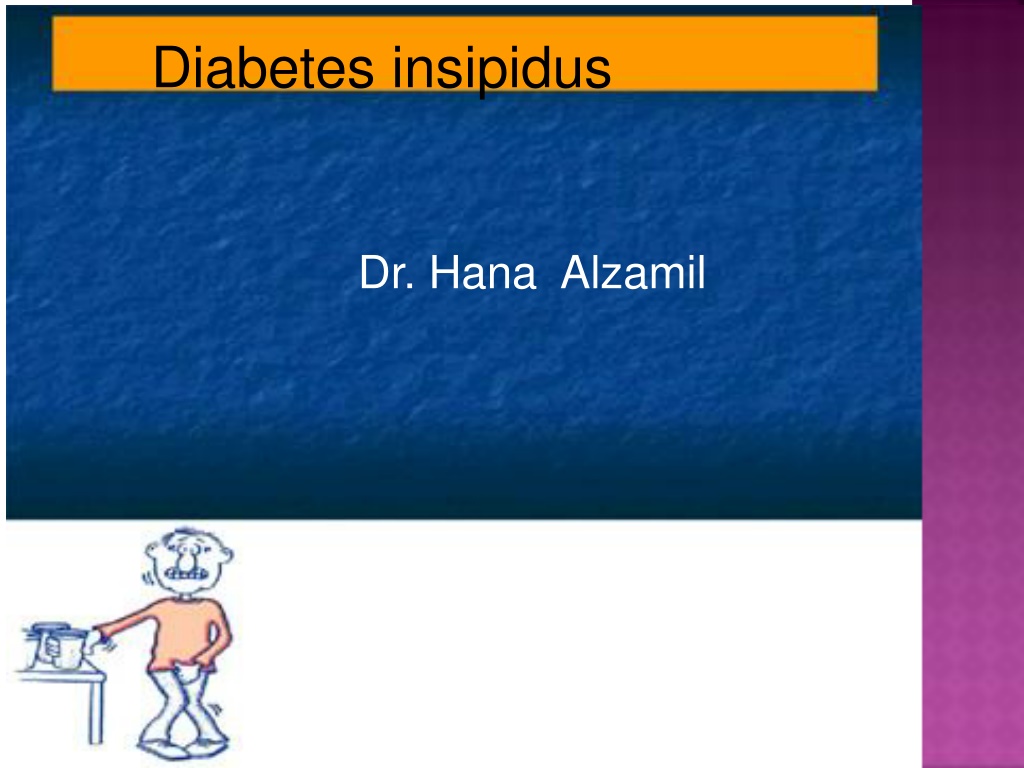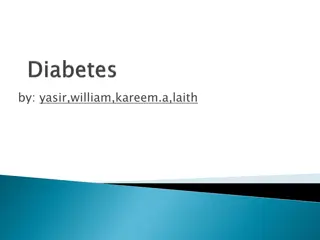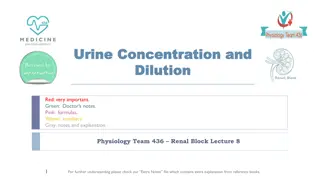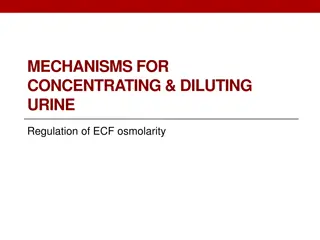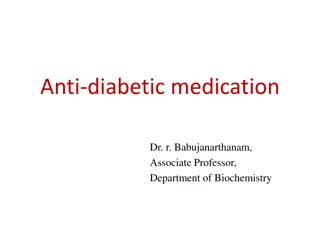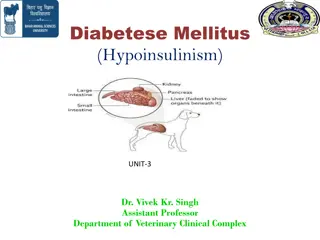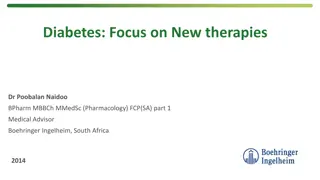Understanding Diabetes Insipidus: Types, Causes, and Symptoms
Diabetes insipidus (DI) is a disorder caused by a deficiency of anti-diuretic hormone (ADH), leading to the excessive passage of diluted urine. Central DI results from pituitary or hypothalamus issues, while nephrogenic DI occurs when the kidneys fail to respond to ADH. Common causes include brain tumors, congenital mutations, and certain medications. Symptoms include polyuria, polydipsia, dilute urine, and dehydration. Proper diagnosis and treatment are essential in managing DI.
Download Presentation

Please find below an Image/Link to download the presentation.
The content on the website is provided AS IS for your information and personal use only. It may not be sold, licensed, or shared on other websites without obtaining consent from the author. Download presentation by click this link. If you encounter any issues during the download, it is possible that the publisher has removed the file from their server.
E N D
Presentation Transcript
Diabetes insipidus Dr. Hana Alzamil
DIABETES INSIPIDUS (DI) Types and causes of DI Central Nephrogenic DI Symptoms and signs of DI Syndrome of inappropriate ADH secretion
DIABETES INSIPIDUS (DI) DI is a disorder resulting from deficiency of anti-diuretic hormone (ADH) or its action and is characterized by the passage of copious amounts of dilute urine. It must be differentiated from other polyuric states such as primary polydipsia & osmotic duiresis.
TYPES OF DI Central DI is due to failure of the pituitary gland to secrete adequate ADH Defect in hypothalamus Defect in pituitary stalk Defect in posterior pituitary Nephrogenic DI results when the renal tubules of the kidneys fail to respond to circulating ADH. Psychogenic polydipsia physiological ADH inhibition
CAUSES OF CENTRAL DI Brain tumors Lung cancer, leukemia, lymphoma most common Head trauma Post-neurosurgery Idiopathic 30-50% Pituitary atrophy, possible autoimmune Congenital Mutations of ADH gene, usually autosomal dominant Infiltrative diseases, such as Histiocytosis X or sarcoidosis
CAUSES OF NEPHROGENIC DI Acquired Drugs: lithium, amphotericin, gentamicin, loop diuretics Electrolyte disorders: hypercalcemia, hypokalemia Renal dz: obstructive uropathy, chronic renal failer , polysystic kidney, post-transplant, pyelonephritis Systemic processes: sarcoid, amyloid, multiple myeloma, sickle cell disease, pregnancy Congenital rare Present in 1st week of life V2 ADH receptor defect X-linked recessive AQP2 water channel defect will respond to ADH
SYMPTOMS AND SIGNS OF DI Polyuria > 3 liters in 24 hrs Sudden onset more typical of central DI Nocturia Polydipsia Dilute urine, urine osm < 200 Anorexia, constipation Serum Na > 150 rare if free access to H2o Dehydration when access to water limited Hyperthermia & lack of sweating
SYMPTOMS AND SIGNS OF DI Diabetes insipidus can cause dehydration which can cause: Dry mouth Muscle weakness Hypotension (low blood pressure) Sunken appearance of the eyes Rapid heart rate Weight loss
SYMPTOMS AND SIGNS OF DI Diabetes insipidus can also cause an electrolyte imbalance Hypernatremia Hyperchloremia Electrolyte imbalance can cause Headache Fatigue Irritability and muscle pains Seizure secondary to Hypernatremia can happen
TREATMENT Desmopressin Desamino-desarginino-vasopressin(DDAVP) V2-selective analogue Little V1 (vasoconstrictor) activity Drug of choice in Diabetes insipidus Administration: Oral, sub-cut, nasal spray
SYNDROME OF INAPPROPRIATE ANTIDIURETIC HORMONE (SIADH) The syndrome of inappropriate secretion of ADH (SIADH) is characterized by Non-physiologic release of ADH Impaired water excretion with normal sodium excretion SIADH is associated with disease that affect osmoreceptor in the hypothalamus
CAUSES Causes: Cancer - Many tumours. Most common is small cell cancer of the lung Brain Meningitis Cerebral abscess Head injury Tumors Lung pneumonia Tuberculosis, lung abscess Metabolic Drugs
MANIFESTATIONS SIADH is characterized by: Fluid retention Serum hypo-osmolarity Dilutional hyponatraemia Hypochloremia Concentrated urine in the presence of normal or increased intravascular volume Normal renal function
Hyponatraemia and hypo-osmolarity lead to acute edema of the brain cells An increase in brain water content of more than 5-10% is incompatible with life
SYMPTOMS AND SIGNS Symptoms are Headache Nausea Vomiting Impaired consciousness Neurological signs (severe hyponatraemia) Drowsiness Disorientation Delirium Seizures Coma & death (severe cases)
